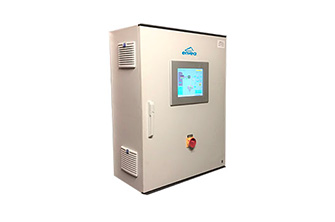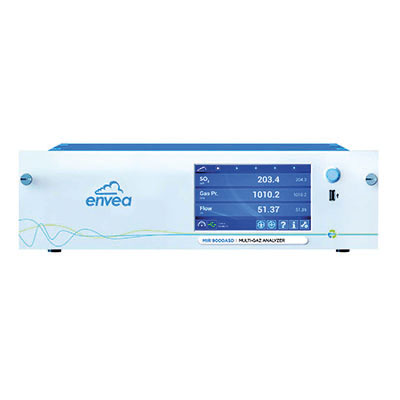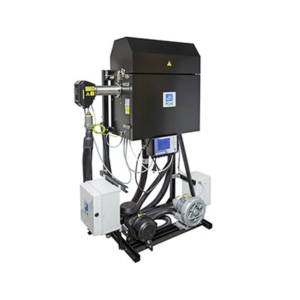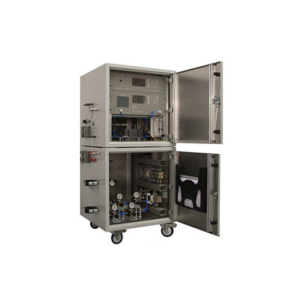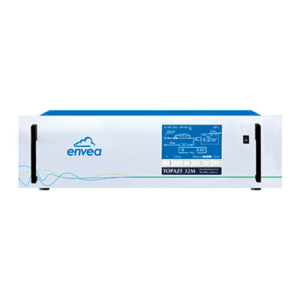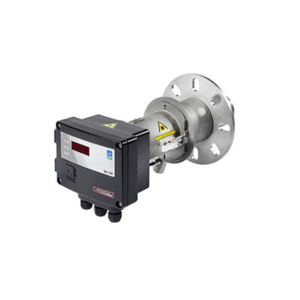SO₂ UV absorption Analyzer
Eco-designed, ultra-compact, smart & connected continuous gas analyzer, for emission or process gas monitoring. Perfectly suited to control SO2 removal efficiency in processes using Flue-gas desulfurization FGD / DeSOx systems.
Smart analyzer including AMS control functionalities: integrated sampling control, automatic zero and span gas injection, external pump control, system alarms display…
NEW generation
- Superior metrological performances for the measurement of SO2
- Compatible with any type of drying technology (gas cooler, permeation, dilution…)
- Environmental-friendly and cost-saving analyzer, with ultra low power consumption
- Ultra-small and lightweight : 3U, 19’’ Rack
- Highly accurate, excellent stability economical, easy and reduced maintenance
- Proactive, user-friendly remote communication
- Real-time calibration graph, animated synoptic, auto-diagnostic, control and maintenance data screens can be displayed while the instrument is operating
- Breakthrough mechanical design for weight and power saving as well as thermal insulation & reliability
- Smart analyzer including AMS control functionalities: integrated sampling control, automatic zero and span gas injection, external pump control, system alarms display…
- Includes embedded Communication Protocol for WEX® Management Software with automatic recognition and configuration
- Built-in cell for O2 monitoring (optional)
SO2 removal efficiency in processes using Flue-gas desulfurization FGD / DeSOx
Combustion is often a dirty process, releasing a range of pollutants including sulfur dioxide, nitrogen oxides, carbon dioxide, volatile organic compounds, fly ash and a range of heavy metals. Neutralization/absorption of acidic pollutants, namely the NOx and SOx gases, prior to the fly ash filtration and treatment is essential to avoid damage to the filter media and excess of emissions. This operation is realized by the DeNOx (NOx reduction) and the FGD (SOx reduction) systems and is carried out by several techniques, including injecting a quantity of lime, limestone slurry, activated carbon or sodium bicarbonate, proportional to the pollutant concentrations.
In FGD applications, to calculate and precisely adjust this pollutant reduction, on-line monitoring of SO2 (precursor of SO3 and sulfuric acid derivates) must be set on the process upstream of the abatement plant. The advantage of flue gas Process monitoring with ENVEA’s MIR 9000ASD analyzer ensures that the pollutant abatement function is optimized, whilst reducing the overuse of valuable materials in the abatement process, in turn providing cost savings to the plant operator and minimizing pollutant releases. Measuring additionally the water content would additionally allow the detection of a possible leak in the boiler.
Industries concerned:
- Municipal and Hazardous Waste Incinerators
- Industrial Boilers and Furnaces
- Power & Combustion
- Cement Kilns, Chemical & Petrochemical Plants
| Technical Specifications | |
|---|---|
| Measurement range | 0-100 / 0-1000 mg/m3 user programmable 0-35 / 0-1500 ppm user programmable |
| Minimum detectable limit (2σ) | 0.2 ppm |
| Noise (σ) | 0.1 ppm |
| Response time (0-90 %) | 5 – 40 sec (programmable) |
| Zero drift | < 1 ppm / 7 days |
| Span drift | < 1% / 7 days |
| Linearity | ± 1 % |
| Sample flow-rate | Approximately 25 liter/hour |
| Pressure and temperature compensation | Automatic |
| Display | TFT LCD color screen, resolution: 800 (RGB) x 480, size: 7 inches |
| Communication | MODBUS/RTU, MODBUS/TCP, MODE4, UDP protocol |
| Power supply | 100~250Vac, 50/60Hz + ground or 24V |
| Power consumption | 50 W (23 W/h with optional 24 V PS) |
| Working temperature | 0 °C to 35 °C |
| Memory storage of measurement values | Capacity : 1 year based on 15-min intervals |
| Alarms management | Continuous detection and identification of anomalies: temperature, flow rate, electric parameters, programmable measurement threshold |
| Maintenance tests and diagnostics | Direct access through the touch screen, remotely, through the ENVEA ConnectTM app or DAHS software |
| Output connectivity | Ethernet (RJ45), 3 x USB ports, 2 dry contacts outputs included Optional: 4 analog outputs (0-1 V, 0-10 V, 0-20 mA, 4-20 mA), RS232/RS485 |
| USB port | Type A USB socket: 2.0 (3.0 compliant) |
| Zero/span external SV control | Contact connector with screw terminals |
| Dimensions (LxDxH) | 483x606x177 mm ; 19’’ rack, 3U |
| Weight | 9 kg (19.9 lbs) |
Emission measurement: “MIR 9000 ASD Option”
Certificate Holder: ENVEA S.A. (Environnement S.A.)
Test Mark Number: 0000051692
